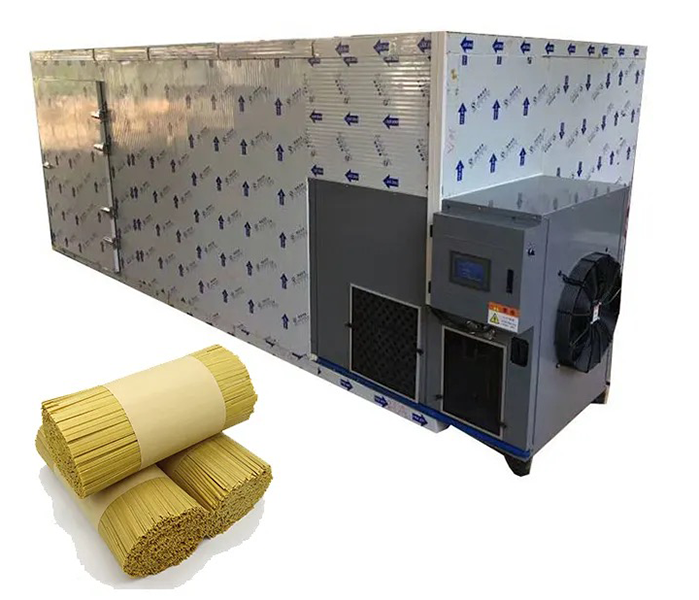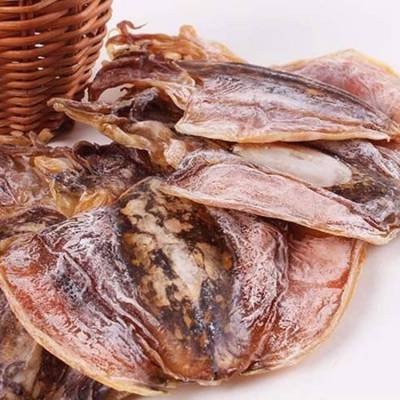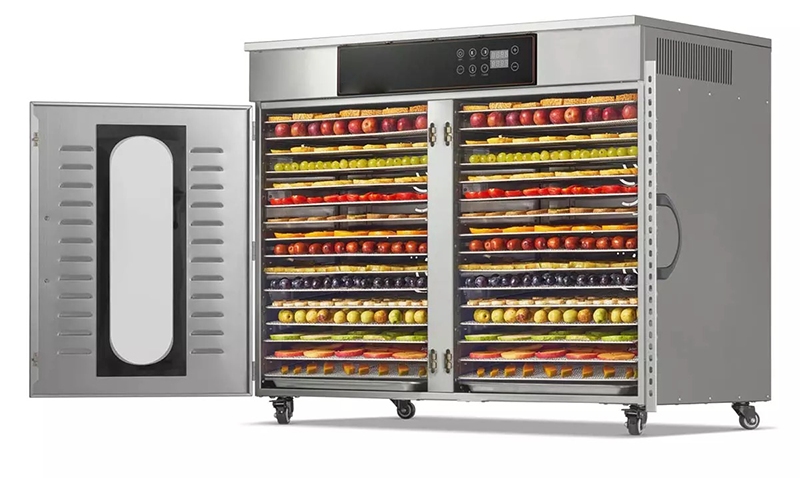
Content Menu
● Understanding Heat Pump Dryers
>> How Heat Pump Dryers Work
● Advantages of Using Heat Pump Dryers
>> Applications of Heat Pump Dryers
● Tax Credits for Heat Pump Dryers
>> Understanding Tax Credits
● Benefits of Tax Credits
● Comparing Heat Pump Dryers with Traditional Drying Methods
● Best Practices for Using Heat Pump Dryers
● Conclusion
● FAQ
>> 1. What is a heat pump dryer?
>> 2. How does a heat pump dryer save energy?
>> 3. Can I claim tax credits for purchasing a heat pump dryer?
>> 4. What types of food can be dried using a heat pump dryer?
>> 5. How long does it take to dry food using a heat pump dryer?
In recent years, the demand for food dehydrators has surged, driven by a growing interest in healthy eating, food preservation, and sustainability. As a leading manufacturer of food drying machines in China, we provide OEM services to international brands, wholesalers, and producers. This article explores the benefits of using heat pump dryers for food processing and how potential tax credits can make these machines more affordable.

Understanding Heat Pump Dryers
Heat pump dryers are advanced appliances that utilize unique technology to efficiently remove moisture from food. Unlike traditional drying methods that often rely on high temperatures, heat pump dryers operate at lower temperatures while still achieving effective dehydration. This process helps retain the food's original color, shape, and nutritional value.
How Heat Pump Dryers Work
1. Heat Absorption: The dryer absorbs heat from the surrounding air.
2. Heat Compression: The absorbed heat is compressed to increase its temperature.
3. Drying Process: The hot air is circulated through the drying chamber, evaporating moisture from the food.
4. Dehumidification: The moisture-laden air is expelled outside, allowing for continuous drying.
This cycle not only conserves energy but also ensures a more gentle drying process compared to conventional methods.
Advantages of Using Heat Pump Dryers
- Energy Efficiency: Heat pump dryers consume significantly less energy than traditional electric or gas dryers, making them an environmentally friendly choice.
- Nutrient Preservation: The low-temperature drying process helps preserve vitamins and minerals in fruits and vegetables, making them healthier options for consumers.
- Versatility: These dryers can handle a wide variety of foods, including fruits, vegetables, meats, herbs, and even pet food.
- Cost Savings: By investing in a heat pump dryer, businesses can reduce waste and save money on purchasing out-of-season produce or processed foods.
- Reduced Carbon Footprint: Using energy-efficient appliances contributes to lower greenhouse gas emissions, supporting global efforts to combat climate change.
Applications of Heat Pump Dryers
Heat pump dryers are suitable for various industries:
- Agriculture: Drying fruits and vegetables for long-term storage.
- Food Processing: Producing dried snacks like jerky or fruit leathers.
- Herbal Medicine: Preserving medicinal herbs without losing potency.
- Seafood Processing: Efficiently drying fish and other seafood products.
- Home Use: Many households are adopting heat pump dryers for personal use to prepare healthy snacks and preserve seasonal produce.
Tax Credits for Heat Pump Dryers
With the growing emphasis on energy efficiency and sustainability, governments are introducing incentives to encourage the adoption of energy-efficient appliances. In the United States, tax credits are available for homeowners and businesses that invest in heat pump technology.
Understanding Tax Credits
Tax credits can significantly reduce the initial investment cost of purchasing a heat pump dryer. Here's how they work:
- Eligibility: To qualify for a tax credit, the appliance must meet specific energy efficiency standards set by government regulations.
- Amount: Depending on the state and federal programs available, tax credits can cover a percentage of the purchase price (often up to 30%) or provide a fixed dollar amount (up to $2,000).
- Claiming Credits: Tax credits can typically be claimed when filing annual taxes. It's essential to keep receipts and documentation regarding the purchase.
Benefits of Tax Credits
1. Reduced Costs: Tax credits lower the financial barrier to acquiring energy-efficient appliances.
2. Encouragement for Sustainable Practices: By incentivizing energy-efficient technologies, tax credits promote environmentally responsible choices among consumers and businesses.
3. Long-Term Savings: The reduced operating costs associated with energy-efficient appliances lead to significant savings over time.
4. Increased Market Demand: As more consumers take advantage of tax credits to purchase heat pump dryers, manufacturers may respond by increasing production capacity and improving technology further.
5. Support for Innovation: Tax incentives can stimulate research and development in energy-efficient technologies, leading to better products in the future.

Comparing Heat Pump Dryers with Traditional Drying Methods
To understand why heat pump dryers are becoming increasingly popular, it's essential to compare them with traditional drying methods such as solar drying and conventional electric or gas dryers. Below is a comparison table highlighting key differences:
| Feature | Heat Pump Dryer | Traditional Dryer | Solar Dryer |
| Energy Efficiency | High (uses less electricity) | Moderate to Low | Free (uses sunlight) |
| Temperature Control | Precise low-temperature control | High-temperature drying | Dependent on weather conditions |
| Nutrient Retention | Excellent | Moderate | Variable |
| Initial Cost | Higher upfront cost | Lower upfront cost | Minimal investment |
| Operating Cost | Low (energy-efficient) | Moderate | None |
| Environmental Impact | Low (reduces carbon footprint) | Moderate | Low (renewable resource) |
Best Practices for Using Heat Pump Dryers
To maximize the efficiency and effectiveness of your heat pump dryer, consider implementing these best practices:
- Pre-treatment of Food: Some foods may benefit from pre-treatment methods such as blanching or marinating before drying to enhance flavor and texture.
- Proper Loading Techniques: Avoid overcrowding the drying chamber; allow adequate space between items for air circulation to ensure uniform drying.
- Monitoring Moisture Levels: Use moisture meters to determine when foods are adequately dried; this helps prevent spoilage during storage.
- Regular Maintenance: Schedule routine maintenance checks on your dryer to ensure optimal performance and longevity of the equipment.
- Experimentation with Settings: Different foods may require different settings; experiment with temperature and time settings for various items to achieve desired results.
Conclusion
Investing in a heat pump dryer not only enhances food preservation practices but also offers potential financial benefits through tax credits. As consumers become more health-conscious and environmentally aware, the demand for efficient food drying solutions will continue to rise. By taking advantage of available incentives, businesses can position themselves competitively in the market while contributing to sustainability efforts.
The combination of energy efficiency, nutrient preservation, versatility in applications, and financial incentives makes heat pump dryers an attractive option for both commercial producers and home users alike. As technology continues to evolve, we can expect even more innovations that will further enhance the capabilities of these machines while reducing their environmental impact.

FAQ
1. What is a heat pump dryer?
A heat pump dryer is an appliance that uses a refrigeration cycle to remove moisture from food at lower temperatures compared to traditional dryers.
2. How does a heat pump dryer save energy?
Heat pump dryers recycle heat within the system instead of generating new heat continuously, resulting in lower energy consumption.
3. Can I claim tax credits for purchasing a heat pump dryer?
Yes, if your dryer meets specific energy efficiency standards set by government regulations, you may be eligible for tax credits when filing your taxes.
4. What types of food can be dried using a heat pump dryer?
Heat pump dryers can effectively dry various foods such as fruits, vegetables, meats, herbs, seafood, and even pet food.
5. How long does it take to dry food using a heat pump dryer?
The drying time varies depending on the type of food and its moisture content but typically ranges from 4 to 8 hours per batch.












